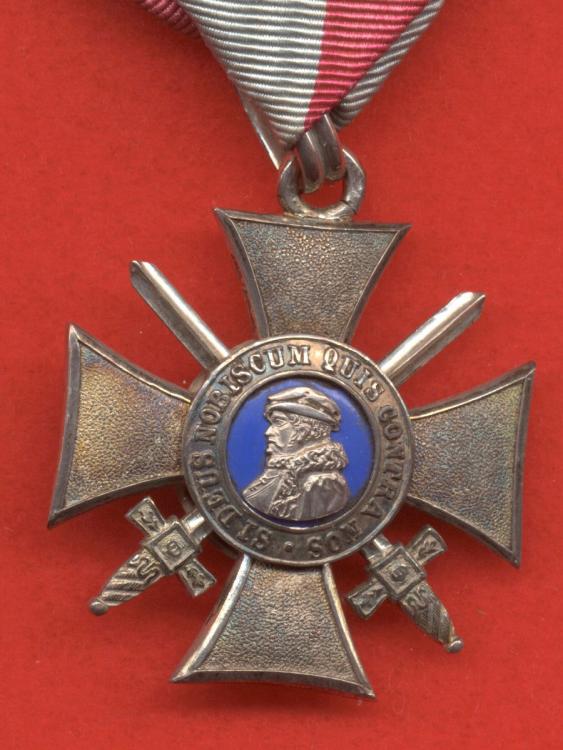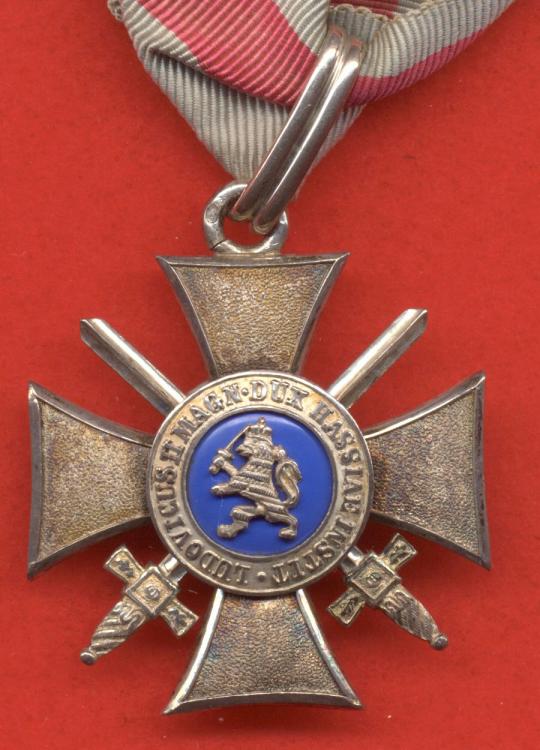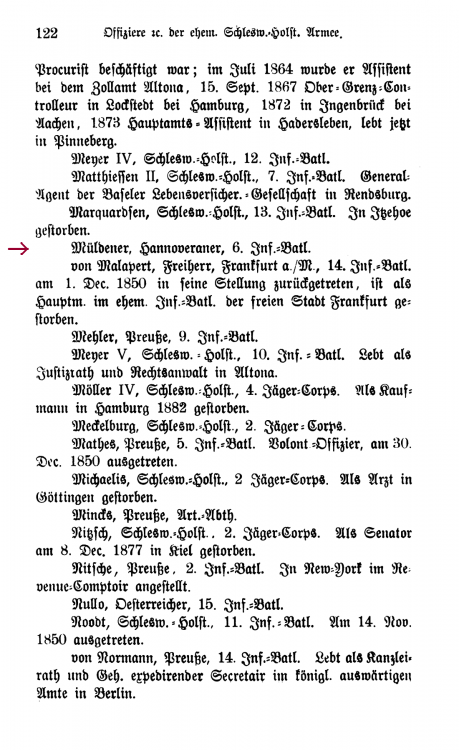-
Posts
4,908 -
Joined
-
Last visited
-
Days Won
97
Content Type
Profiles
Forums
Blogs
Gallery
Events
Store
Everything posted by Dave Danner
-
A few more. I might have missed some. Hans Markmann, Leutnant, IR 186 Kurt Rackow, Leutnant, IR 158 Karl Rothenburg, Leutnant der Reserve, 5.GRzF Fritz Rümmelein, Leutnant der Reserve, RIR 87 Walther Schnieber, Leutnant, IR 63 Emil Trebing, Leutnant der Reserve, IR 370 Karl Willweber, Leutnant der Reserve, 2.GRzF
-

Renault FT-17 light tank
Dave Danner replied to Chris Boonzaier's topic in Armour, Vehicles, Ships & Aircraft
Hey! I have pics of another one I had forgotten about. This one is in Kansas City, Missouri at the US National World War I Museum. Also, note that this one and the one at Compiegne are different from the one at the WTS in Koblenz. That one appears to have a cast rounded turret, while these have turrets made of flat plates bolted together. -

Renault FT-17 light tank
Dave Danner replied to Chris Boonzaier's topic in Armour, Vehicles, Ships & Aircraft
I saw it too, but my only picture is from a distance as the museum was already closed when I got there. -
Here is a table with award numbers. The large number of Reuß awards is because Heinrich XXVII Fürst Reuß j.L. was Chef of the parent JB 4. Anhalt, Sachsen-Altenburg and part of Braunschweig were in the IV.Armeekorps area, so those awards are mostly to native sons, as are likely most of the other smaller numbers of state awards.
-
No major connection between Oldenburg and Baden jumps to mind, so possibly an Oldenburger serving in a Baden regiment. Baden had two universities (Heidelberg and Freiburg), so many students from other parts of Germany did their one-year volunteer service there and ended up commissioned into Baden regiments.
-

Yugoslavia Zeljko "Nick" Glasnovic
Dave Danner replied to Chris Boonzaier's topic in Southern European & Balkan States
He was apparently elected. Here is the English-language page on the Croatian parliament website: http://www.sabor.hr/Default.aspx?sec=6254 As Chris already knows, I knew Nick when he was a Bosnian Croat officer in the mid-1990s. I was a staff officer at some joint discussions between the Bosnian and US Armies. I just discovered earlier today, though, that apparently he and I are distant cousins. -
Also, the precedence would still be wrong for a frack, since the Dienstauszeichnung ranks ahead of the Centenary. Also, a Prussian wouldn't place the Prussian awards after a peacetime Landesorden. A Schaumburger with the PrVfK would likely have the Kreuz für Treue Dienste on the noncombatant ribbon, and Schaumburg-Lippe had its own DA for enlisted soldiers.
-
The order of precedence is wrong for Prussia or any other state. As I noted, the PrVfK is a war decoration, and ranks ahead of all of the other awards. A proper Prussian precedence would be PrVfK, DA, Cent, SLV2. The Weimar-era veteran's decoration doesn't fit in any official order of precedence. Such awards were sometimes treated as war commemorative medals, and placed after war decorations but ahead of peacetime awards, and sometimes treated as non-state awards and placed after all German awards but before foreign decorations. But there were no rules. Of course, in the Weimar-era, there were no rules, period. So sometimes "good-bad" bars show up with whatever precedence the owner wanted. I cannot say for certain that it is one of these "good-bad" bars; the construction doesn't raise any red flags to me, but I am far from an expert on such matters. Assuming it is "good-bad", I actually have a candidate: Fwlt.d.L. Johannes Adam, Schichtmeister in Fürstenhausen, Bergwerksdirektions-Bezirk Saarbrücken, received the SLV2 in 1916 and the PrVfK in 1918. His only other known award was the Prussian 9-year Dienstauszeichnung. I have no idea what active service he had, but if he was active in 1897, then the Centenary fits, although it does not show up in most ranklists and court and state handbooks. Regards, Dave
-
Maj. Eduard Bornhausen, *24.11.1876 in Mannheim; 13.1.17-31.12.18 Kdr. RJB 15; 1.1.38 SS-Oberführer, 30.1.43 Oberst z.V. Hptm. Richard Helmke, *9.6.1883 in Breslau; 11.8.16-21.8.16 Fhr. RJB 15; E-Offz., 1.9.41 Oberst Maj. Friedrich v. Weyrauch, *2.4.1871 in Cassel; 10.1.17-13.1.17 Kdr. RJB 15; Oberstlt.a.D., zul. im RH For RJB 15, a more or less complete list: 03.09.14-13.09.14 Fhr. - Stenglin, Frhr. v., Hptm., gef. 10.11.14 14.09.14-21.10.14 Kdr. - Vogel v. Falckenstein, Maj., gef. 21.10.14 21.10.14-25.10.14 Fhr. - Stenglin, Frhr. v., Hptm., gef. 10.11.14 25.10.14-11.11.14 Fhr. - Ameln, v., Hptm., gef. 13.11.14 11.11.14-03.12.14 Fhr. - Micke, Hptm. 03.12.14-24.01.15 Fhr. - Pohl, Oberst 24.01.15-08.03.15 Fhr. - Micke, Hptm. 10.03.15-24.05.15 Kdr. - Derschau, v., Maj. 26.05.15-10.10.15 Fhr. - Kardorff, v., Hptm. 11.10.15-15.11.15 Fhr. - Müffling, Frhr. v., Hptm. 15.11.15-11.08.16 Kdr. - Weyrauch, v., Maj. 11.08.16-21.08.16 Fhr. - Helmke, Hptm. 31.08.16-10.01.17 Kdr. - Becker, Maj. 10.01.17-13.01.17 Kdr. - Weyrauch, v., Maj. 13.01.17-31.12.18 Kdr. - Bornhausen, Maj. 6., 7. u. 9.18 zeitweise Fhr. - Zychlinski, v., Hptm. 09.02.19-16.03.19 Fhr. - Dippert, Hptm.
-
The Medjidie with Swords is not commonly found, especially among officers who only served alongside the Turks. It is more likely an officer who was detached to serve in the Ottoman armed forces. A Navy officer on board the SMS Breslau or SMS Goeben, for example, or an aviator detached to the Ottoman air force (although the lack of a miniature Prussian and/or Turkish aviator's badge makes this less likely), or an officer with the German Military Mission serving on an Ottoman staff. One candidate would be Lt.z.S. Fritz Böhme from the SMS Goeben. He had all the awards on the chain, but he was reactivated and also had at minimum the Ehrenkreuz für Frontkämpfer and the Wehrmacht Dienstauszeichnung 4.Klasse. So if it were his, it could have been his pre-1935 chain. He was in uniform from 1933 to 1945, reaching Kapt.z.S., so he might not have had a reason to update a chain for wear on civilian clothes. Of course, there could be other naval officers from the Goeben or other ships with the same awards. As Andreas notes, Turkish awards aren't shown in the wartime rank lists. I only know Böhme's awards because they are listed in the Crew Chronik for his Seekadett crew.
-
According to that site, and to Wikipedia, from 1840 to 1926 the Ottomans used for certain purposes the Rumi calendar. Rumi means Roman and refers to a modified Julian calendar. Apparently, they adopted it as the Islamic calendar is lunar, and the length of the year is thus shorter than the solar year. By the Rumi calendar, 1332 equals 1916. Still no idea why they would specifically use that date on the medal bar. Ottoman coins can be even more annoying, since they often used regnal years. So all coins under a sultan would have the same year when he came to power, and another number elsewhere on the coin for how many years into his reign the coin was minted.
-
Honestly, I don't know. 1332 does correspond to the start of the war in August 1914, so maybe the dating is like the French Croix de Guerre or various bars to some German decorations like the medal of the Saxe-Ernestine Order from Saxe-Coburg & Gotha. I don't have my Turkish reference works at hand.




